Sitting next to St Paul’s Cathedral is an old gatehouse that looks like its been there for centuries as modern buildings were added around it. But in fact, this is Temple Bar, and it used to be in an entirely different location.
Temple Bar owes its origins to a time when roads were paid for by tolls instead of taxes, and one of the many toll gates that surrounded the City was based on Fleet Street. There had been a toll gate of some description since at least the 13th century, if not earlier, and by 1351 a large wooden gate stood on the spot.
The name comes from the fact that it bars people from passing, and was sited next to the entrance to the Temple area next to the City of London.
This wooden toll gate survived the Great Fire of London, but it was decided to build a stone building instead as part of the wider rebuilding of London — and that toll gate was completed in 1672 — 350 years ago.
Over the centuries the building became an increasing nuisance to road traffic, made worse when in 1874 a tall wooden pole was installed right in the middle of the main arch to hold it up. That was the final straw, and a few years later, the City of London dismantled the building but did so carefully and the stones were bought by the brewer Henry Meux and built in his Hertfordshire home. It seemed destined to remain there forever, but in 1984 it was bought by the newly formed Temple Bar Trust for the princely sum of £1, with the intention to return it, somehow, to London.
Although permission was granted to reconstruct the building close to St Paul’s Cathedral in 1986, that was for a free-standing building as part of the ill-fated Paternoster development that was scrapped in favour of the current layout which was approved in 1990. In its new location, it is once more a gatehouse between two areas of the City.
It cost £3 million to rebuild the archway, and it’s been there since November 2005. There’s a large room above the gates, and if you know how, you could rent the room above the gatehouse for an event. More recently though, the gatehouse became London’s newest Livery Hall, as it’s been occupied by the Worshipful Company of Chartered Architects, a modern livery company that promotes architecture in the City of London.
Recently, it was open for the public to take a look inside.
The entrance isn’t that easy to find, being a small rather anonymous door next to the Paternoster Square toilets, and up a couple of flights of stairs to a modern office room. The building that sits next to Temple Bar was constructed as part of the wider site development, and was originally used by the estate management. Now it’s part of the livery hall.
The use of modern rooms is because the space inside Temple Bar is really quite small. Barely large enough for a drinks reception or a dining table.
From the outside, it looks as if Temple Bar is firmly clamped between two modern buildings, but the upper room is free standing, and rather lovely is that the old and new are linked by a small outdoor walkway that is very well hidden from the ground level, and gives a surprisingly atmospheric way of getting into Temple Bar, especially as you get to peer over the backs of the stone sculptures on the building.
It’s a plain room inside, recently renovated and repainted, with a number of plaques thanking the people who paid for the rebuilding works.
As a space, it’s modest, but has ever such a good location and is pretty darned exclusive as a venue for hire.
Not that obvious is that there’s a void space above the ceiling, with two hatches onto the roof. A gentle suggestion to put models of the traitor’s decapitated heads that used to adorn the roof of Temple Bar was not approved.
Which is a pity.
Temple Bar was open to the public as part of Open House London, so keep an eye out for next September to see if it’s open again.
As an aside, London’s about to get another Livery Hall, when the Worshipful Company of Carmen move into a new hall on Fleet Street. Livery Halls don’t get built all that often, and in 2022, two of them will have opened. That’s exceptional.

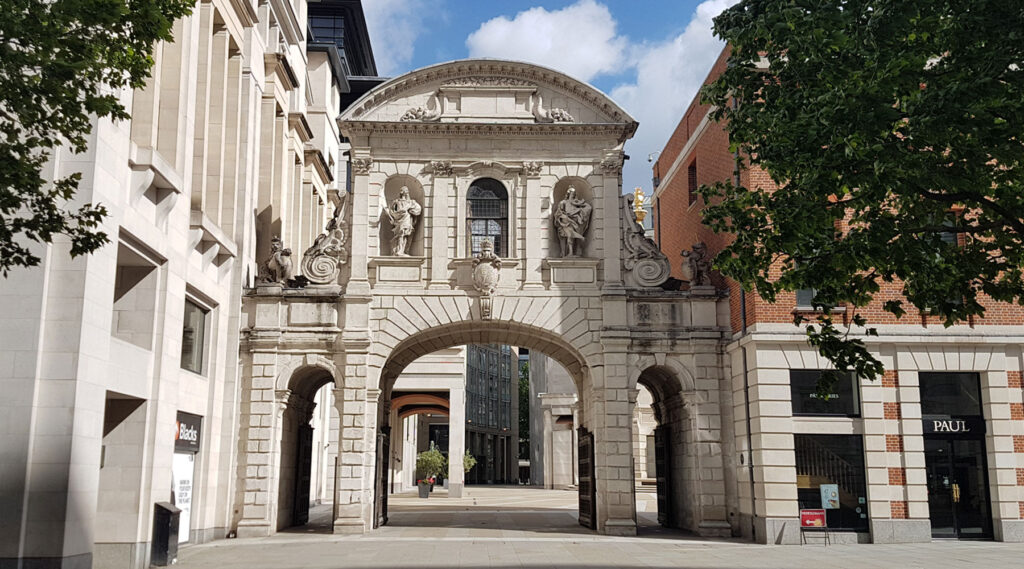
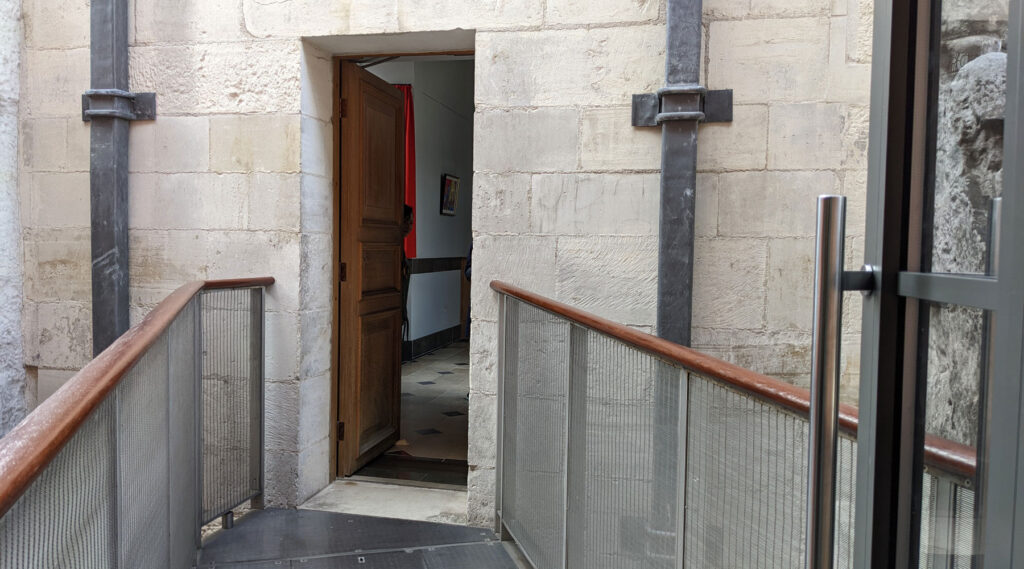
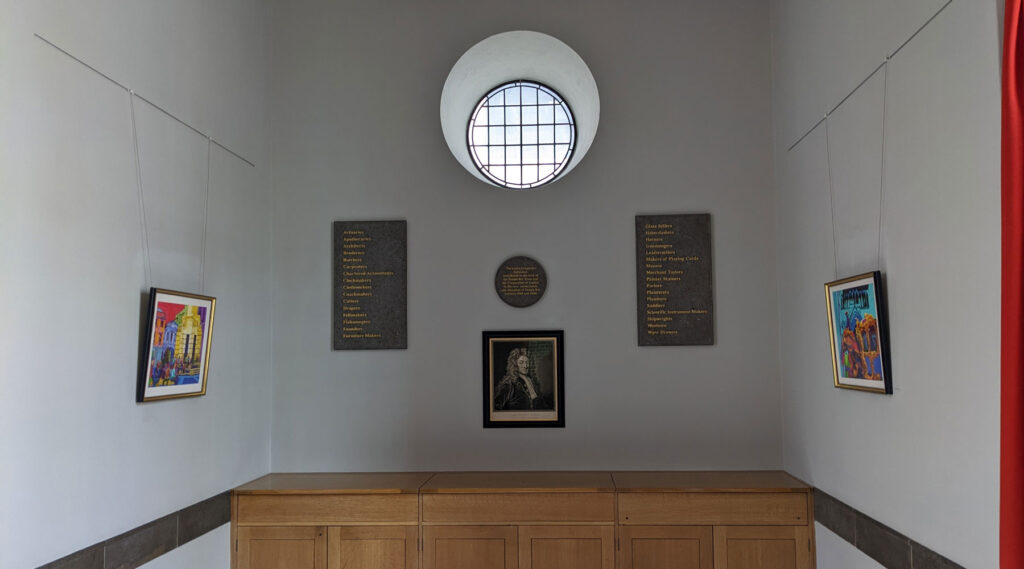
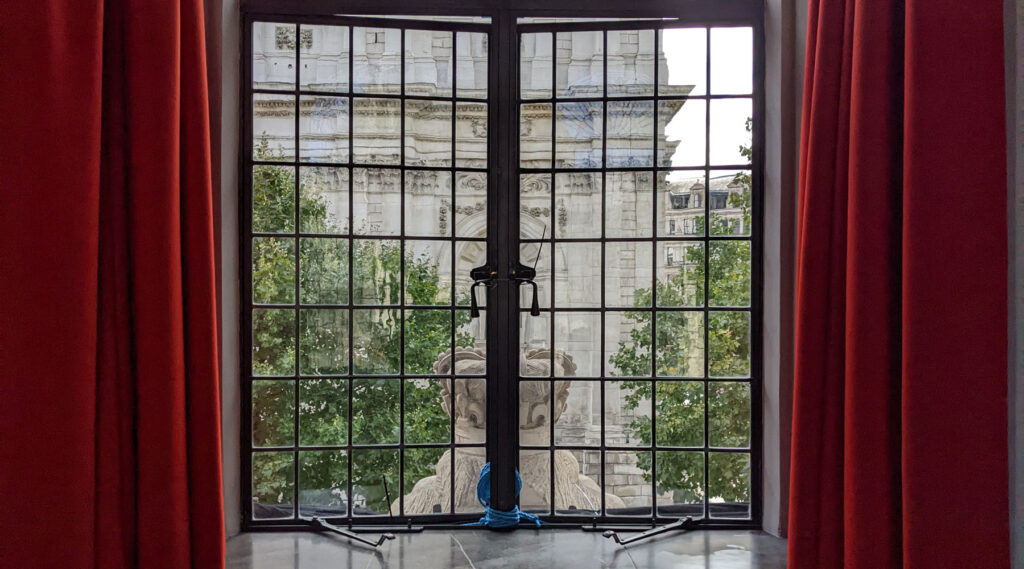
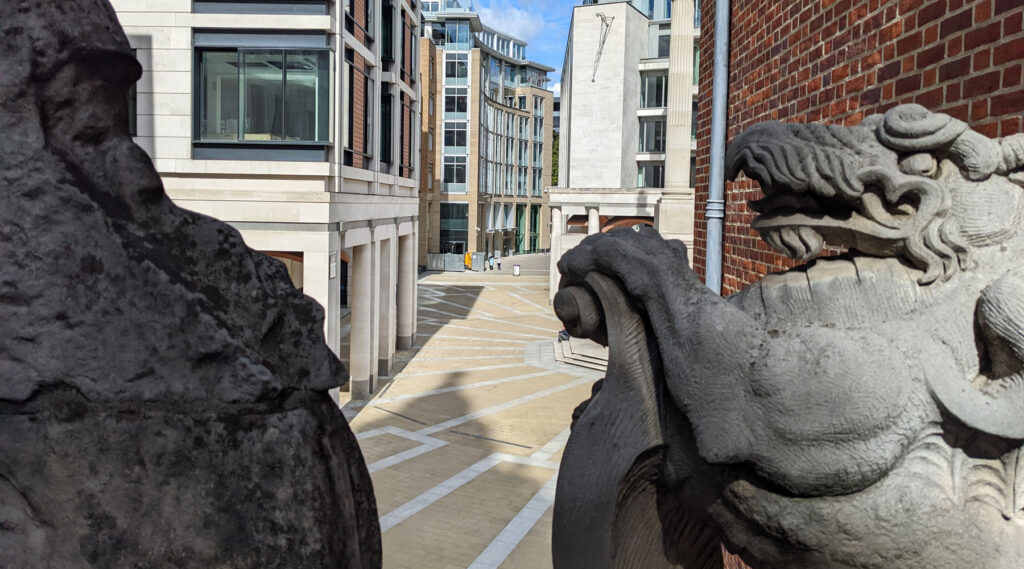
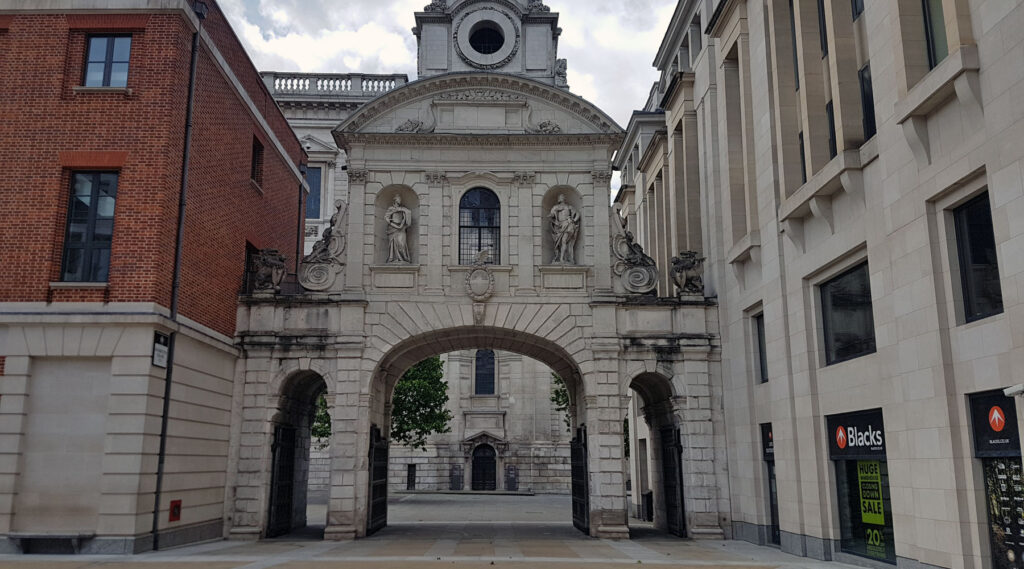






I worked in the Conservation Department at the Museum of London between 1988-2016 and one of the fascinating jobs I was asked to work on was a ‘time capsule’ discovered by workmen deconstructing the Temple Bar prior to its removal to the City. Inside a gap in the stonework close to the foundations they had found a glass jar with a ground glass lid firmly wedged in place, inside of which could be seen a pink paper wrapping something solid. The opening of the capsule, without breaking it, proved to be quite demanding made more so by the fact that a London Television crew turned up wanting to film this. After some time I managed to open it and carefully remove its contents. These turned out to be a horse racing newspaper enclosing various small denominations of Victorian currency, not the bags of gold that I think the film crew expected, hence the film commentator’s closing remarks of ‘this is xxxx from Temple Bar somewhat underwhelmed’…. (However, by coincidence, a few years later I did work on another glass jar ‘time capsule’ , from another part of London, and I recently saw a programme where its contents had been valued in the hundreds of thousands of pounds….)